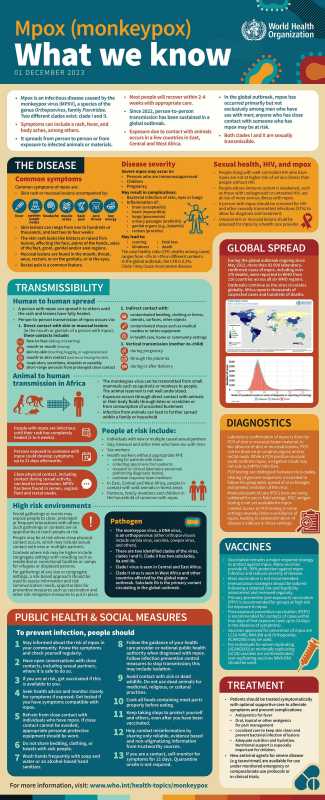Health
WHO Issues Updated Guidelines for Monkeypox Surveillance and Contact Tracing

The World Health Organization (WHO) has released revised guidelines for monitoring and tracing cases of monkeypox, aiming to enhance global efforts in combating the spread of the virus. The updated document, reflecting the latest data on monkeypox, includes a new section on reinfections and offers clear definitions for suspected, probable, and confirmed cases of reinfection.
In line with the recommended reporting procedures outlined in the WHO Standing recommendations and the International Health Regulations (IHR 2005), clinicians are urged to promptly notify public health authorities of suspected monkeypox cases. For probable and confirmed cases, reporting to WHO through the IHR national focal points (NFPs) is essential, ensuring timely data submission to facilitate international coordination.
Emphasizing the importance of early detection, the guidelines underscore the need for thorough case investigations following suspected monkeypox cases. This involves clinical evaluations of patients in well-ventilated settings with appropriate protective gear, inquiry into potential sources of infection, and safe collection of specimens for laboratory testing.
Upon identification of a suspected case, contact tracing activities should commence without delay to track potential exposure risks. Contacts of confirmed or probable cases are advised to monitor their health daily for 21 days post-contact, alerting authorities of any symptoms promptly. While quarantine measures are not necessary for asymptomatic contacts, precautions such as avoiding sexual contact are recommended during the monitoring period.
With a focus on endemic regions, the guidelines have been adjusted to address specific considerations pertinent to the African region. The overarching goal remains to swiftly detect and contain monkeypox outbreaks, safeguard vulnerable populations, and progress towards eliminating human-to-human transmission of the virus.
WHO’s Health Emergencies Programme (WHE) continues to spearhead these efforts, working in collaboration with national health authorities to bolster surveillance systems and response capabilities across affected regions.












